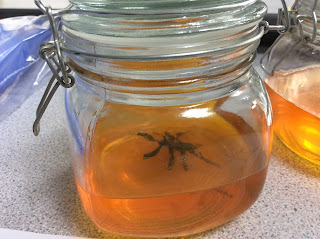In Science, we created different types of rocks using sweets. First we created Igneous rock - We observed what happened when hard chocolate drops were melted together (in the microwave), as this is what happens to magma and lava which creates igneous rocks such as basalt and granite. Then we created Sedimentary rock – We placed two different coloured starburst sweets together to form a conglomerate rock. We pressed the two sweets together using the warmth and pressure of our hands. These layers form sedimentary rocks like sandstone, chalk and limestone. Last of all, we created Metamorphic rock – We started to layer the two sweets together again, then we pressed, squeezed and twisted the two sweets together, with the heat of our hand. This is because the heat of the magma and the pressure of the water create metamorphic rock, like marble and slate.




